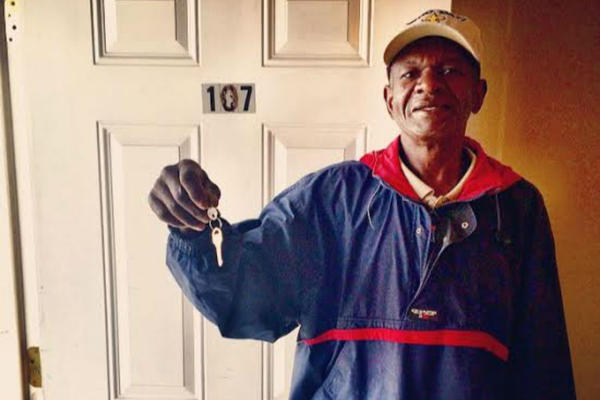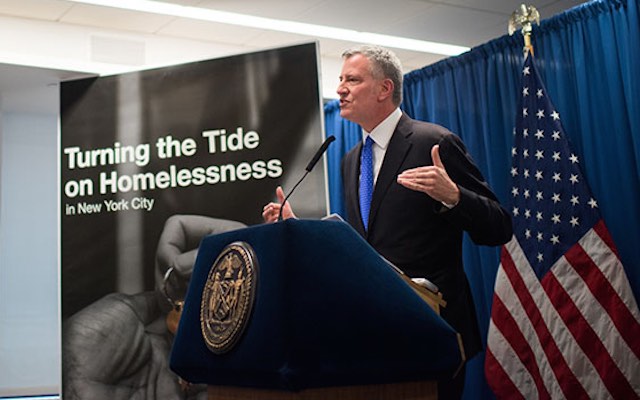There have been many success stories across the US when it comes to getting homeless veterans off the street in places like Houston, Boston, Philadelphia, Virginia and Connecticut, but homelessness in the general population is rising in America’s largest cities.
Mayor Bill de Blasio of New York, has just unveiled a five-year plan that realistically will reduce the number of people in shelters by 2,500 by the end of the 2021, but more importantly begin to turn the tide on rising homelessness.
RELATED: Oprah Winfrey Steps Up to Aid DC Homeless Women in Big Way (WATCH)
The initiative also calls for opening shelters in existing buildings over the next five years. In total, 90 new shelters will be established across the five boroughs. The city would also renovate and expand 30 existing shelters, according to a report released by the mayor’s office.
With more than 60,000 people in NYC shelters currently, progress will be “slow and incremental” says the Mayor.
“I hope and I believe it will be steady,” de Blasio told an audience of nonprofit service providers, and faith and community leaders. “If we sustain incremental progress, it will be the first time that’s happened in three-and-half decades, and that can open the door to something better up ahead.”
POPULAR: This Moving Company Helps Women Leave Abusive Homes At No Cost
The City has achieved some success over the last year: the HOME-STAT initiative, which has attempted to do something that was not done previously – literally go out and meet each individual who is living permanently on the streets, get to know them deeply, understand everything that can be understood about them and their situation. The program has dispatched 387 outreach workers—mobilized citywide 24 hours per day, seven days a week—to bring homeless individuals into shelters, including 690 individuals last year.
“Every community in this city has homeless people. We need a shelter system that reflects where people come from and allows people to be sheltered in their own neighborhoods or borough,” said de Blasio.
WATCH: Man Builds Tiny House for Homeless Woman Sleeping in the Dirt
The city is also shifting more affordable housing units to folks at lower incomes – to seniors, to veterans, with a commitment to 15,000 new supportive apartments, of which 550 will be available this year.
Recent efforts to prevent homelessness has included rental assistance that has reached 161,000 households over three years.
“We provided rental assistance to help 51,000 New Yorkers avoid coming into shelters or move out of shelters,” said Department of Social Services Commissioner Steven Banks.
In a media release, The Mayor’s Office says the plan will:
- Continue to implement an aggressive prevention-first strategy that keeps more people in their homes by making housing more affordable, stopping illegal evictions, and connecting New Yorkers who are struggling to resources that will help them stabilize their lives;
- Continue to actualize the 46 reforms identified throughout the 90-day review of homeless services, making long-needed operational and other reforms to better serve New Yorkers on the verge of homelessness and homeless New Yorkers in shelter;
- Completely eliminate the use of cluster apartment units by the end of 2021 and commercial hotel facilities by the end of 2023;
- Reduce the overall current number of shelter sites (which include hotels and cluster sites) by 45 percent;
- Keep homeless New Yorkers closer to their communities and supports that they need;
- The City will eliminate the use of 360 cluster sites and commercial hotel facilities and replace them with approximately 90 new shelter facilities and 30 expanded existing sites;
- The City estimates opening about 20 new shelters annually over the next five years, which will require a combination of building new locations and renovating existing buildings.
At the same time, prevention and rehousing initiatives will reduce the current number of homeless New Yorkers in shelters by 2,500 people over five years – the first projected systemic reduction of New York City’s homeless shelter population in a decade.
Click to SHARE the News… Or,





















